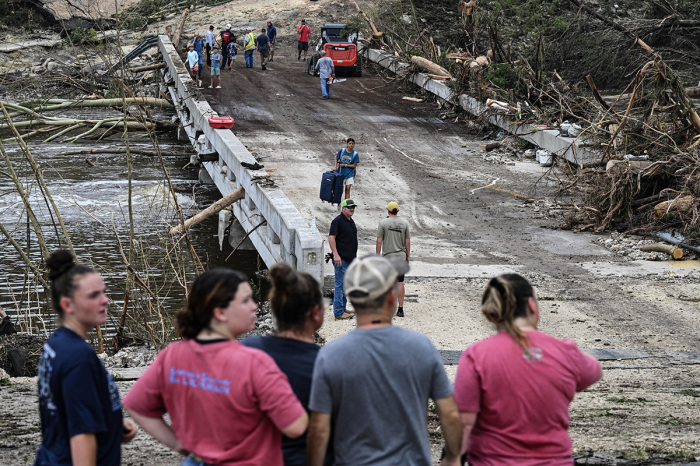
The Federal Emergency Management Agency FEMA failed to include multiple buildings on its flood risk map for Camp Mystic in Hunt, Texas, according to an analysis by NPR, PBS’s FRONTLINE and data scientists.
At least 27 camp attendees died and five others remain unaccounted for after massive flash flooding swept the private Christian summer camp for girls along the Guadalupe River on July 4.
These findings come from a new analysis by NPR, PBS’s FRONTLINE and data scientists, which show that at least eight buildings, including four cabins housing younger campers at Camp Mystic, are located within FEMA’s designated floodway, which is a dangerous area expected to see high-velocity water.
Maps created by First Street, a climate risk modeling company based in New York City, highlight at least 17 buildings at the camp in the path of floodwaters, compared to maps produced by FEMA.
These differences, say experts, stem from a decades-long practice of FEMA maps not including potential rainfall and flash flooding, instead focusing on data from coastal storm surges and large river flooding. First Street suggests that twice as many Americans than indicated by FEMA maps might be living in flood-prone areas.
“The unknown flood risk is bad from a preparation, financial standpoint, but there’s a human element here that often gets overlooked,” Jeremy Porter, head of Climate Implications at First Street, told NPR.
Porter claimed that FEMA has known about this problem for years, but the agency lacks the mandate and funding from Congress to fix it.
“You think in principle people would say we should have better flood coverage, look what just happened,” Porter told NPR. “But it’s so heavily politicized that you can’t get anybody to bring it forward because they don’t want to be the people that raised flood insurance costs.”
The new analysis comes as KSAT reported that a Kerr County firefighter requested a mass emergency alert to warn residents of the flooding in the Hill Country early last Friday morning, but it was not sent until hours later when many had no way to escape.
Of the 120 people who have died as a result of flash flooding in Texas, at least 95 were in Kerr County, including 36 children.
According to audio from a dispatcher obtained by a KSAT source familiar with the emergency notification for residents near Hunt, Kerr County officials took nearly six hours to send a CodeRED Alert requested by a firefighter with the Ingram Volunteer Fire Department at 4:22 a.m. Central time.
“The Guadalupe Schumacher sign is underwater on State Highway 39. Is there any way we can send a CodeRED out to our Hunt residents, asking them to find higher ground or stay home?” the firefighter asked.
A CodeRED alert would have sent an emergency alert to residents’ phones if they had signed up in advance for the early warning system.
Instead of sending the alert, the Kerr County dispatcher asked to send the warning, saying: “Stand by, we have to get that approved with our supervisor.”
Kerrville Mayor Joe Herring Jr. told the Texas Tribune that he received an alert on his phone from the CodeRED system at 6 a.m. on Friday. Others reported receiving the alert at around 5:30 a.m. A source told KSAT that neither the Kerr County Sheriff’s Office nor the Kerrville Police Department sent a CodeRED Alert to some residents until 10:04 a.m. last Friday.
“It’s not that easy, and you just push a button. OK? There’s a lot more to that, and we’ve told you several times,” Kerr County Sheriff Larry Leitha said when asked about the alert on Tuesday. A day later, he told reporters that sending an alert was an “after-action.”
“As I said earlier, with every significant event, you know … every emergency … there’s gonna be an after-action,” Leitha said. “Please, y’all, listen to those words: after-action. … Those questions are gonna be answered. I believe those questions need to be answered to the family of the missed loved ones, to the public, you know, to the people that put me in this office.”
Contact: leonardo.blair@christianpost.com Follow Leonardo Blair on Twitter: @leoblair Follow Leonardo Blair on Facebook: LeoBlairChristianPost















